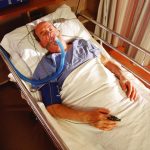The Wound that Does Not Heal
 Impact of nonhealing wounds
Impact of nonhealing woundsChronic, nonhealing wounds are disabling and constitute a significant burden on patients’ activities of daily living (ADLS) and the healthcare system. Of persons with diabetes, 2% to 3% develop a foot ulcer annually, whereas the lifetime risk of a person with diabetes developing a foot ulcer is as high as 25%.8 It is estimated that venous leg ulcers affect 1% of the adult population and 3.6% of people older than 65 years. As our society continues to age, the problem of pressure ulcers is growing. Each of these common types of chronic wounds will require accurate and concise diagnosis and appropriate treatment. Reasons for nonhealing wounds
For patient wounds that do not have the ability to heal, the approach is different. These individuals with the inability to heal (nonhealable wound) may be due to inadequate blood supply and/or the inability to treat the cause or wound-exacerbating factors that cannot be corrected. There may be systemic disease, nutritional impairments or medications that delay or inhibit healing. When a healable wound does not progress at the expected rate, a chronic and stalled wound results. These wounds are more prevalent in older adults and are attributed to the aged skin and comorbidities, such as neuropathy, coexisting arterial compromise, edema, unrelieved pressure, inadequate protein intake, coexisting malignancy, and some medications. Persistent inflammation may be the cause of a stalled wound and in some cases may not be correctable. The presence of multiple illnesses in some older adult patients implies that healing is not a realistic end point.
The second category, a maintenance wound, is when the patient refuses the treatment of the cause (eg, will not wear compression) or a health system error or barrier (no plantar pressure redistribution is provided in the form of footwear or the patient cannot afford the device). These may change, and periodic re-evaluation may be indicated.
Expected healing time for woundsChronic wounds are often recalcitrant to healing, and they may not follow the expected pathway that estimates a wound should be 30% smaller (surface area) at week 4 to heal in 12 weeks.
Chronic wounds: Medical legal assumptions
In the medical legal world there may be an assumption that most if not all wounds can be healed with proper care. In the medical world, what percentage of wounds are considered nonhealable? In a study of 173 wounds, 70% were considered healable, 25% were considered maintenance, and 5% were considered nonhealable including skin changes at life’s end.
Modified with permission from Dr. Diane Krasner, coauthor of Special Considerations in Wound Bed Preparation 2011, an Update, Advances in Skin and Wound Care, September 2011
Dr. Diane Krasner provides an intimate and detailed look at pressure ulcer causes and cures.

